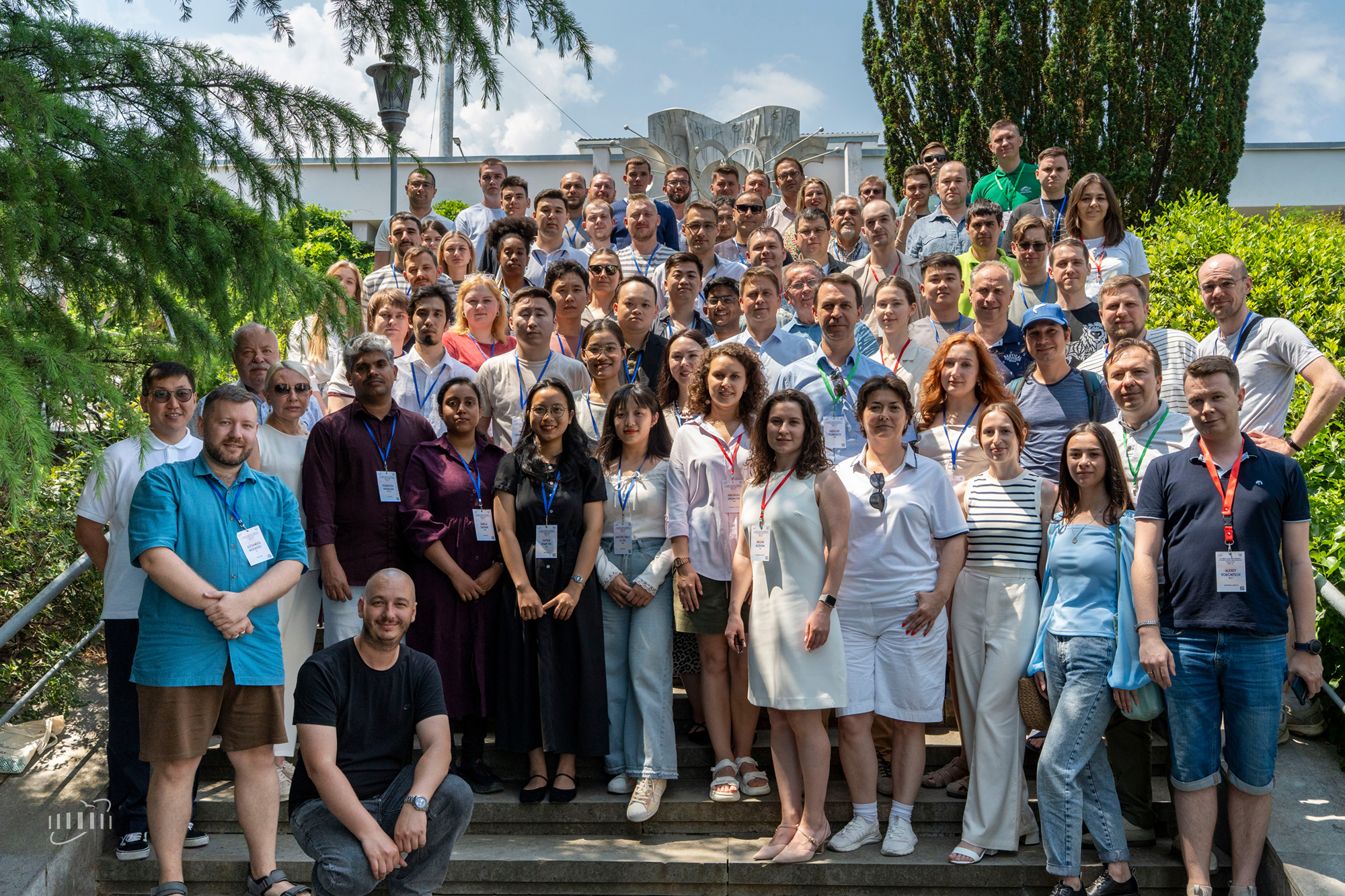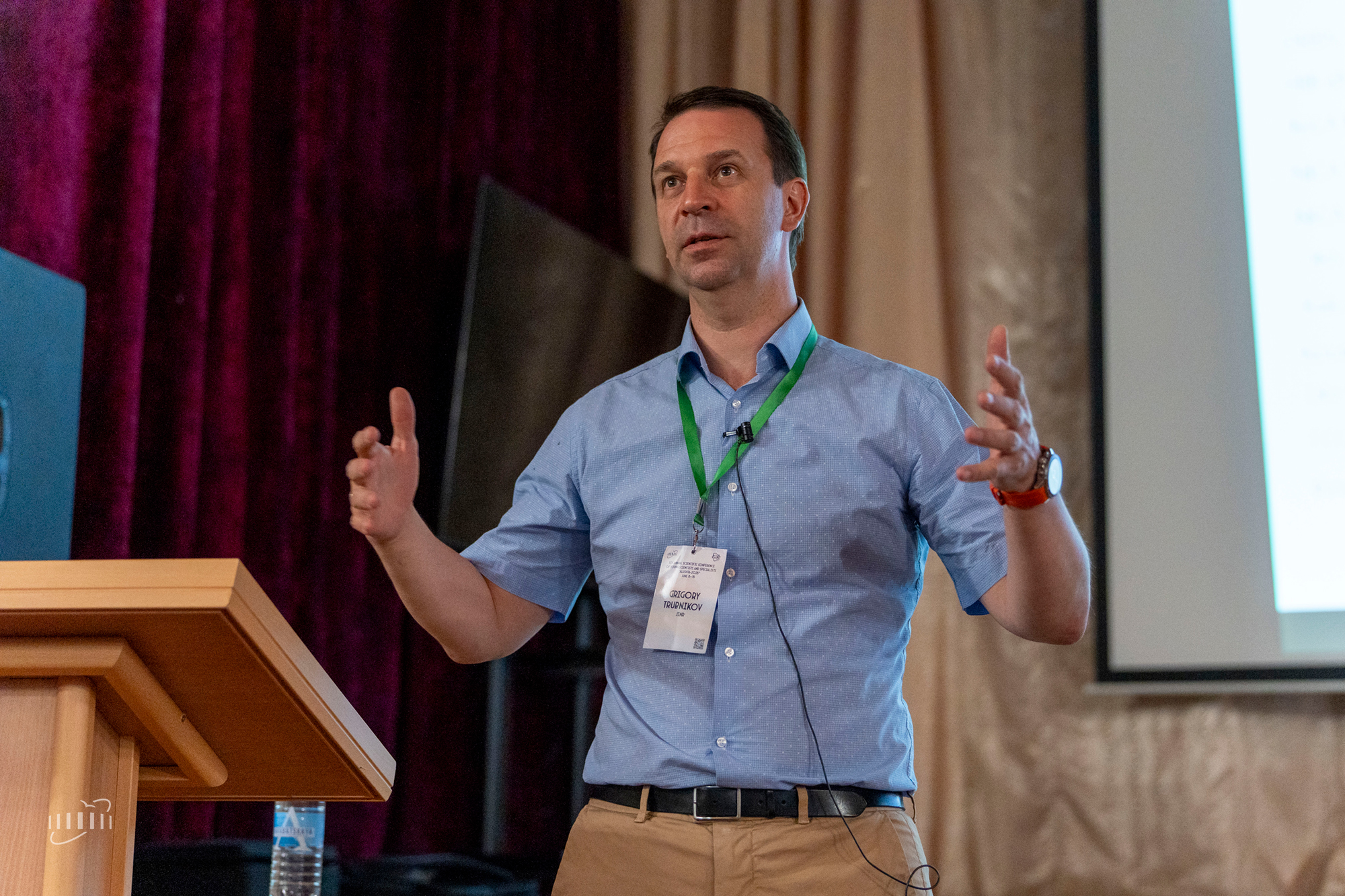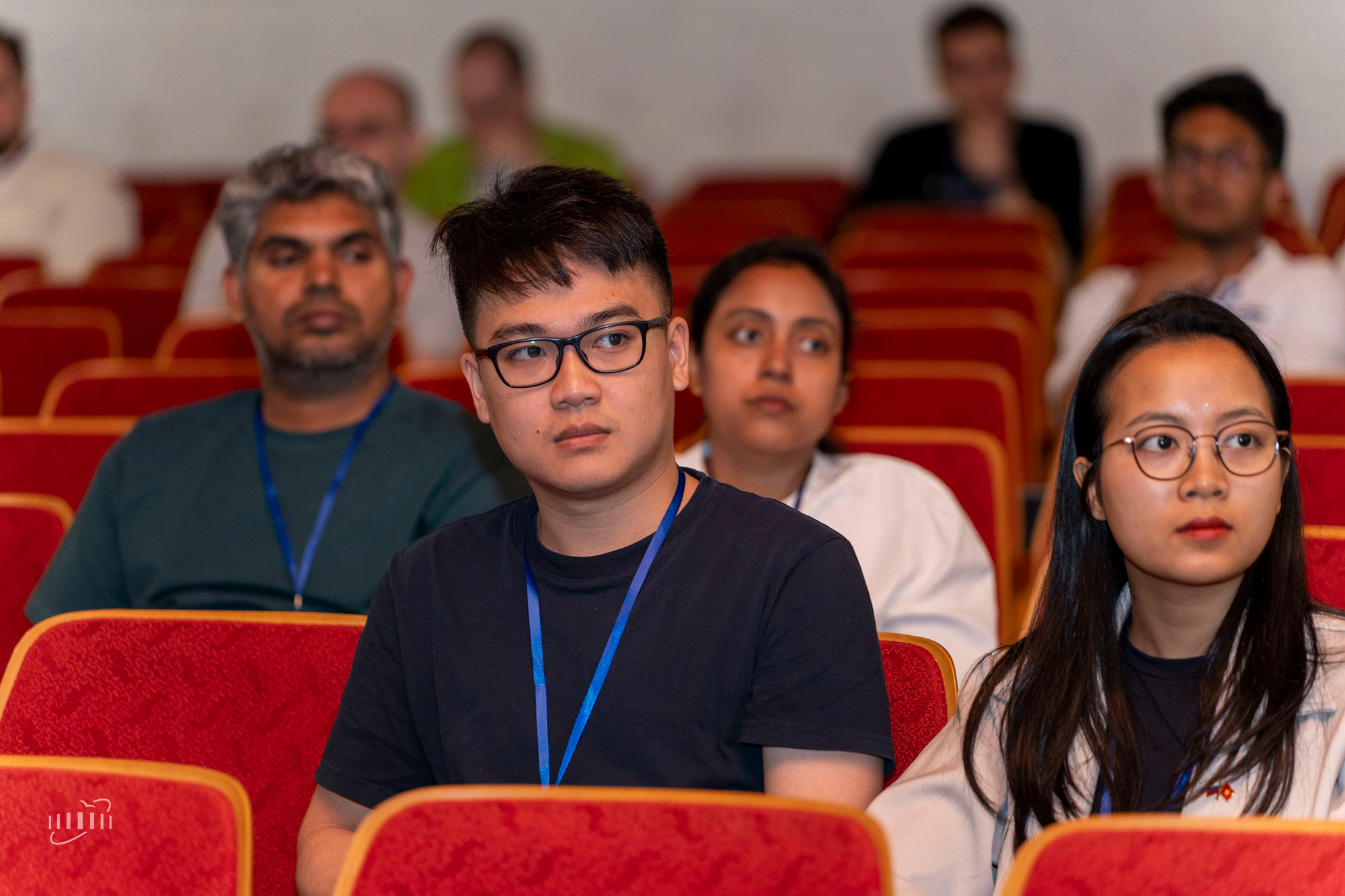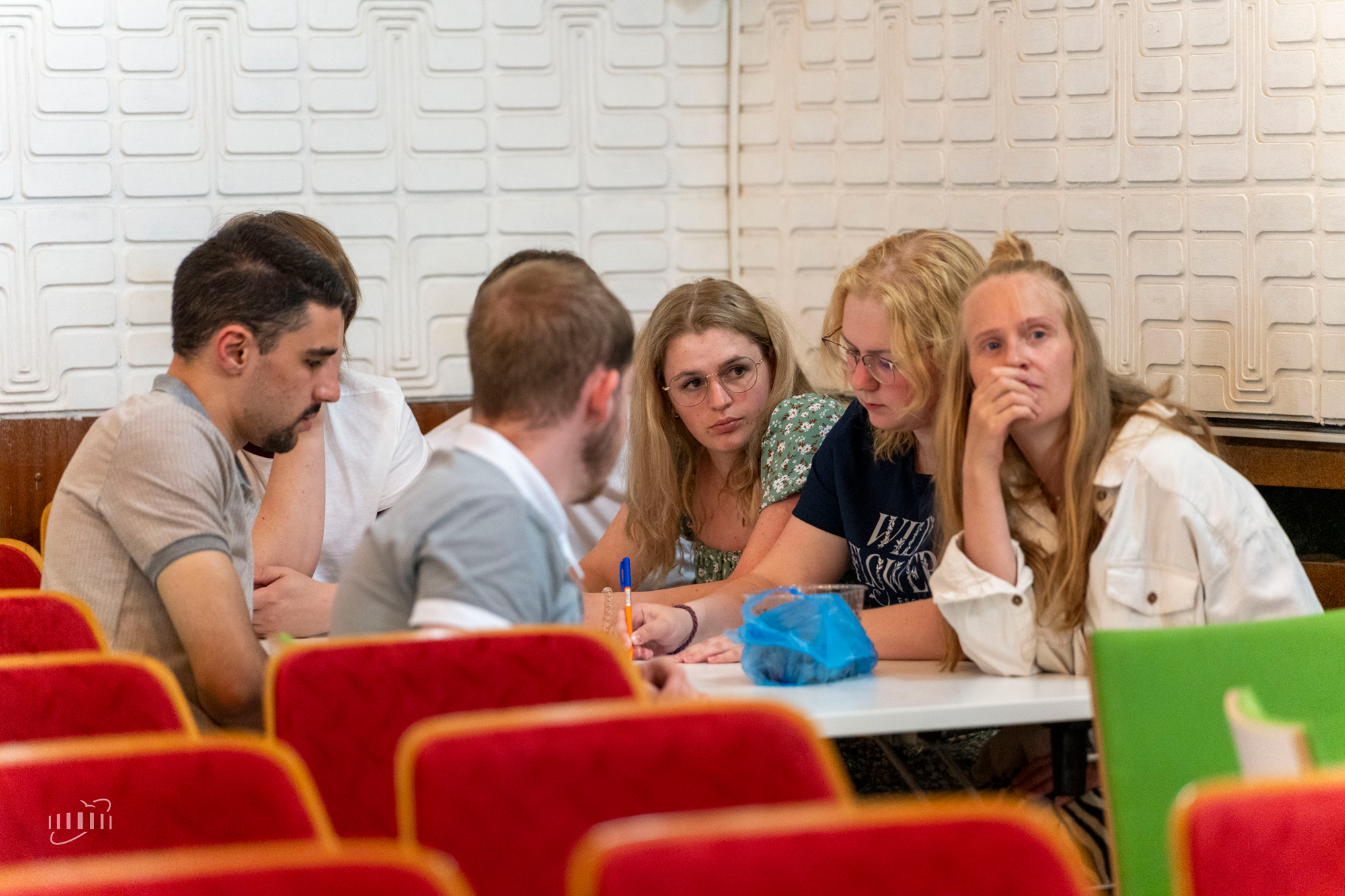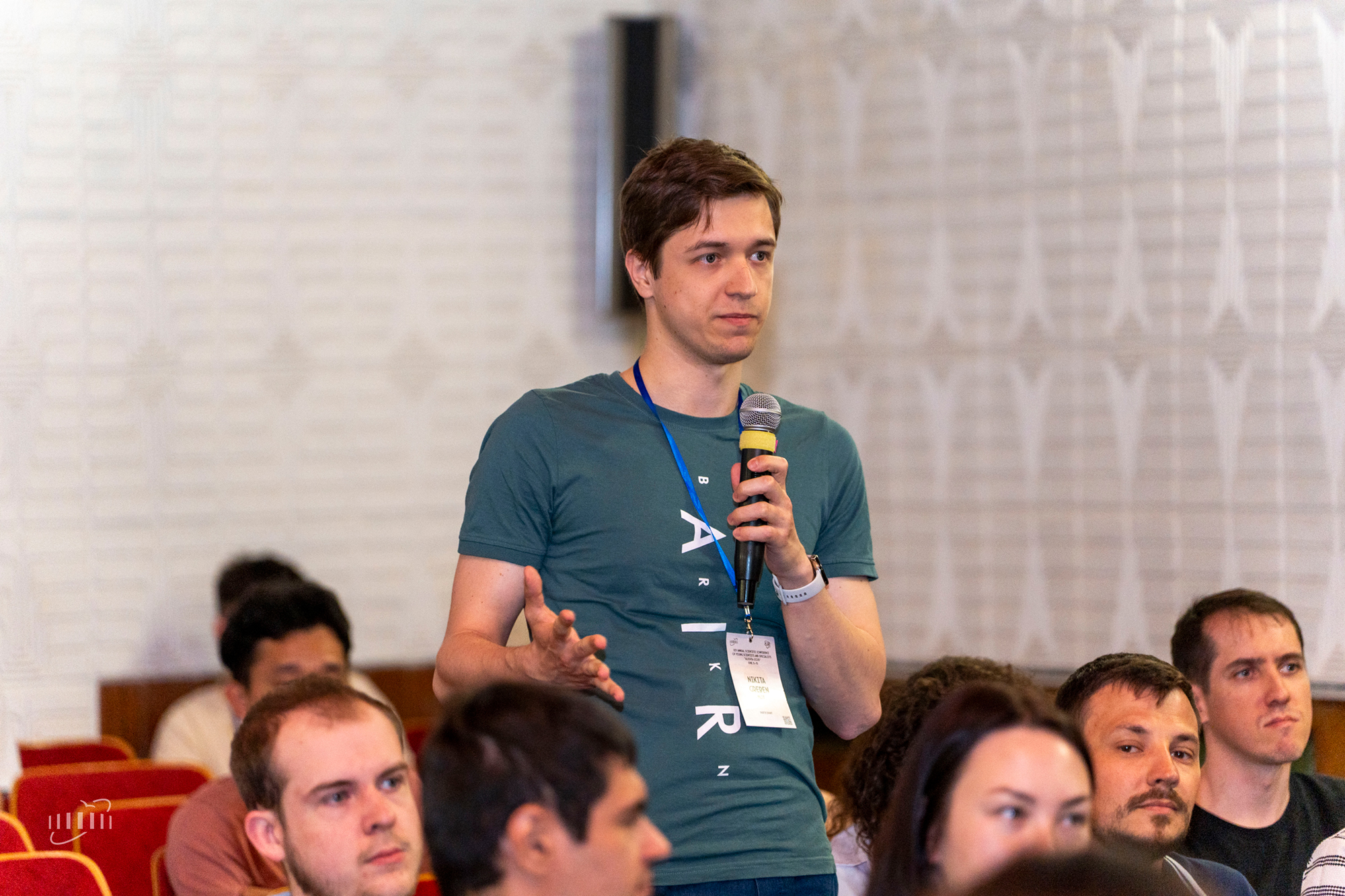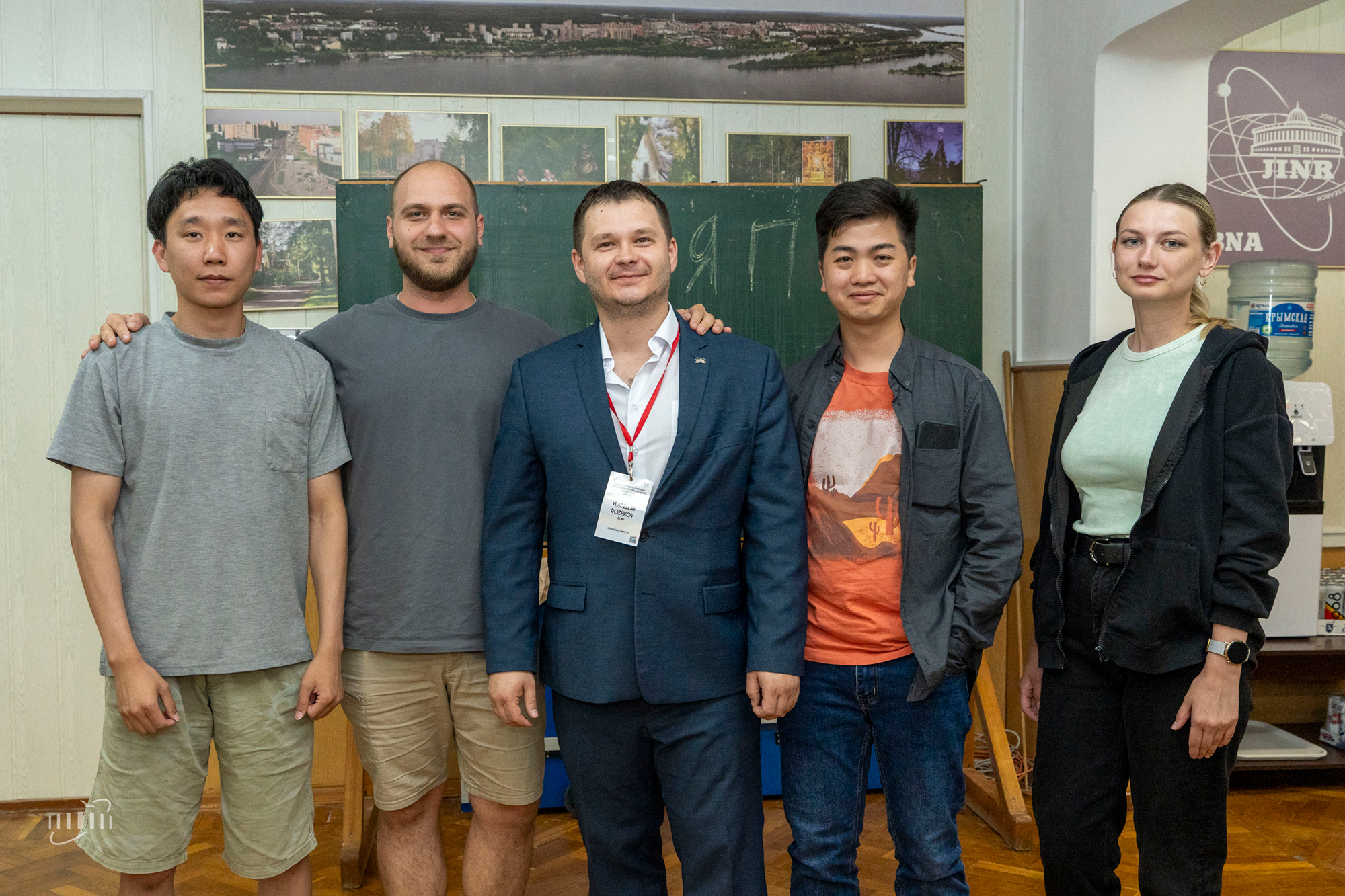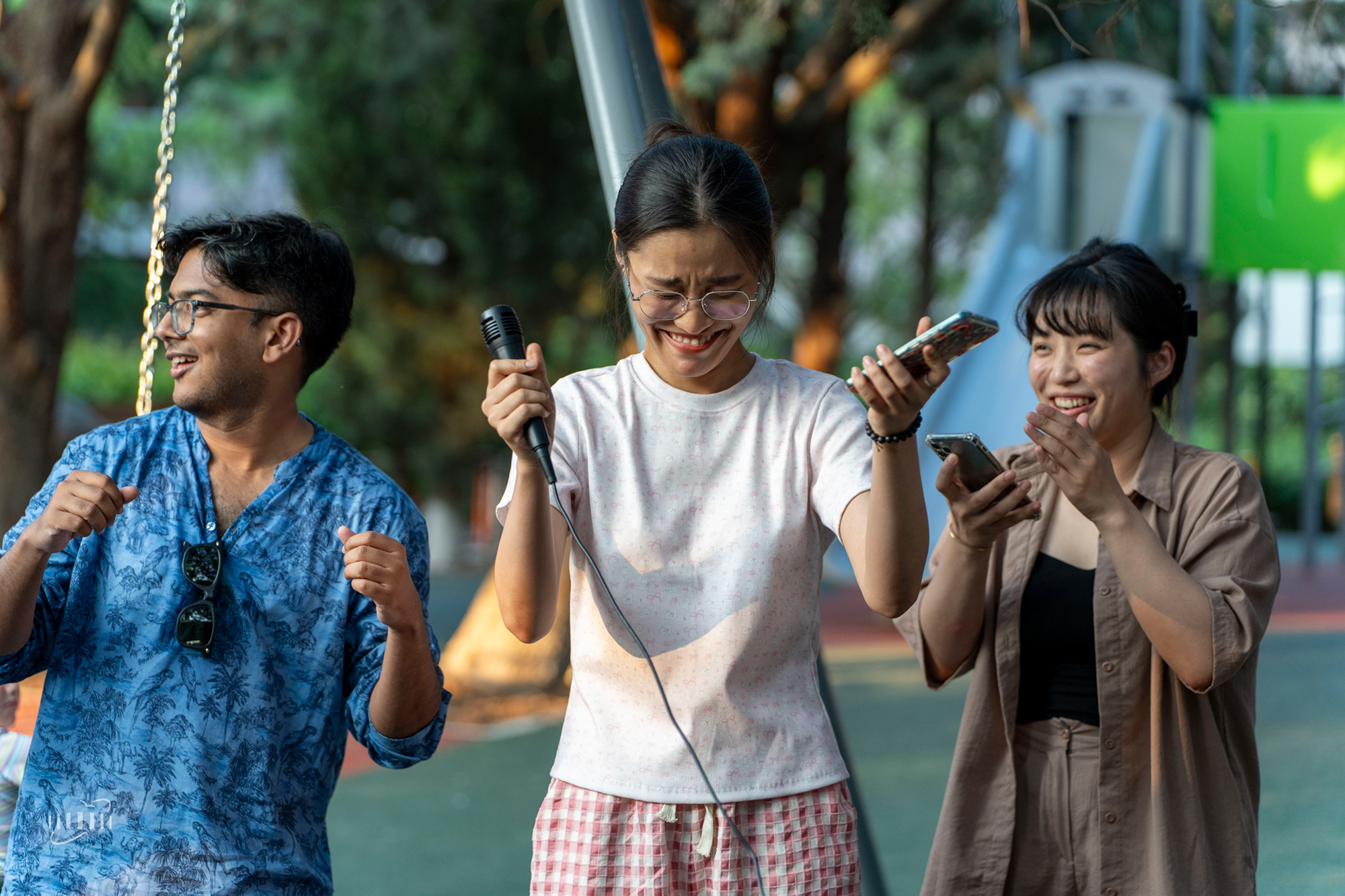Alushta-2025: unlimited science
News, 20 June 2025
On 8–15 June, the 14th International Youth Conference, organized by the Association of Young Scientists and Specialists of JINR (AYSS JINR), took place at the Dubna Resort Hotel (Alushta, Crimea). This year, 56 representatives of Russia, Cuba, Egypt, India, Kazakhstan, Romania, and Vietnam attended the event. Along with the autumn AYSS Conference, the Alushta Conference is the first round in the competition for the JINR Youth Prizes.
This year’s conference was dedicated to the research and infrastructure facilities of the Institute, launched after technical maintenance and planned to be put into operation: IBR-2, LINAC-200, NICA, MSC-230, and to the preparation of work at DC-280. In addition to presentations by participants as part of the sectional sessions, the scientific programme of the event included 7 plenary talks by representatives of JINR, the Medical and Sanitary Unit No. 9 of the Federal Medical-Biological Agency (FMBA) of Russia, and the Coordinating Council for Youth Affairs in the Scientific and Educational Spheres under the Council for Science and Education under the President of the Russian Federation. The topics of the lectures covered the following fields:
- nuclear physics;
- JINR main facilities;
- modern biotechnology;
- radiotherapy;
- cardiovascular diseases;
- artificial intelligence;
- social infrastructure;
- international cooperation.
On the second day of the conference, JINR Director, Academician Grigory Trubnikov delivered a presentation. He took part in a round table and spoke about the results of four years of work of the Directorate (2021-2024): about the goals, already achieved and set for the near future up to 2038. The Director noted such events as the first run at the NICA Accelerator Complex, the development of the neutrino telescope at Lake Baikal, Egypt becoming a JINR Member State, the development of cooperation with Vietnam, joint projects with the FMBA of Russia, and much more. The conference participants had an opportunity to ask their questions and learn more about the conditions of participation in various conferences, the process of receiving grants, the digitisation of Soviet scientific journals, and the work of the Press Office on increasing JINR’s awareness.
One of the key points of the programme was communication with representatives of municipal authorities. Deputy Chair of the Council of Deputies of the Dubna City District Andrey Tamonov had an informal conversation with the participants. Discussion topics included work of the city administration, the development of Social Infrastructure Management Office, and dialogue between science, government, and society. Short surveys were organized to collect suggestions for improving the urban and scientific infrastructure, which allowed participants to better understand the system of interaction with the city administration.
According to Alushta-2025 Co-Chair, AYSS Council Chair, an LRB junior researcher Regina Kozhina, the conference in Alushta is a truly unique scientific event: “It is a pleasure to see new participants, their shining eyes, and to see how they arrive to Alushta as strangers and leave as friends. We are grateful to the lecturers for such a high-level scientific programme and their approachable attitude. I must point out that presentations by the participants are improving as well: this applies not only to their research, but also to the way they present their studies to the audience”.
She stressed that she has been participating in the conference for several years and is confident in the right direction of its development: “The next conference, Alushta-2026, will be dedicated to the Institute’s anniversary, and we already have ideas on how to make the event memorable”.
Regina Kozhina noted the importance of the leisure activities: “This year, even more attention was paid to crosscultural interaction, it was a kind of an experiment. But thanks to the participants’ support and the Organizing Committee’s hard efforts, I can say that everything worked out. We will definitely improve and introduce new formats!”
According to one of the lecturers, a VBLHEP senior researcher Mikhail Shandov, one of the key features of the conference is its multidisciplinarity: “While the tasks of the Institute’s laboratories may seem drastically different, they often can be solved jointly or with similar methods. This is especially true for engineering developments. Such a variety of laboratories and departments in the JINR structure is one of its advantages, which should be used rather than lead to isolation”. In addition, he noted the importance of openness and active interaction: “The participants asked their questions to both lecturers and representatives of the Institute’s Directorate. It was nice to see colleagues from abroad at the conference”.
Mikhail Shandov emphasised that the quality of the event is constantly improving: “This is not my first conference of young scientists in Alushta, and each time the presentations and organization get better. As a member of the Organizing Committee of a previous conference, I know how difficult it is not only to maintain the level, but also to raise it. Therefore, I would like to express my gratitude to the Organizing Committee and wish them strength and ideas for the further development of this wonderful scientific and social event. I wish for the conference to thrive and for the participants to implement their creative plans”.
The conference in Alushta provided young scientists not only with a platform for professional communication and knowledge exchange, but also with a chance to discover the picturesque places of Crimea during excursions and get closer at cultural and sporting events.
The participants expressed special gratitude to Dubna Resort Hotel Director Alexander Ksenofontov. Recently, the Resort Hotel has seen noticeable improvements that go hand in hand with the development of the conference and set the direction for new formats and growth of the event. The conference in Alushta is becoming not only an annual scientific meeting, but also a powerful platform for professional and human unification.
This year, a system for real-time automatic translation of presentations using subtitles generated by artificial intelligence was tested for the first time. In order to increase the availability of scientific content, the organizers plan to continue developing this new feature.
Young scientists of the Joint Institute shared their impressions of the conference:
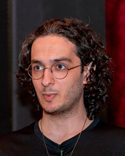 Leonid Romanychev, an MLIT intern researcher: “The conference in Alushta left the warmest impressions. It was the first time in my life when I gave a scientific presentation. It was especially valuable to get to know colleagues from different countries and departments. The inviting atmosphere and vicinity to the sea encouraged open, informal communication”.
Leonid Romanychev, an MLIT intern researcher: “The conference in Alushta left the warmest impressions. It was the first time in my life when I gave a scientific presentation. It was especially valuable to get to know colleagues from different countries and departments. The inviting atmosphere and vicinity to the sea encouraged open, informal communication”.
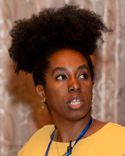 Silvia María Fortuné Fábregas, an FLNP intern researcher: “Participation in the conference was a new and wonderful experience for me. I truly enjoyed the welcoming atmosphere and the diversity of participants and topics. I am grateful for being able to communicate with like-minded people and learn more about the opportunities of interaction within JINR and beyond”.
Silvia María Fortuné Fábregas, an FLNP intern researcher: “Participation in the conference was a new and wonderful experience for me. I truly enjoyed the welcoming atmosphere and the diversity of participants and topics. I am grateful for being able to communicate with like-minded people and learn more about the opportunities of interaction within JINR and beyond”.
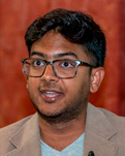 Aniruddha Dey, an FLNR researcher: “The trip to Alushta turned out to be exciting and inspiring: excellent organization, useful discussions, and a rich programme. It is especially important that the event helps bring together young professionals from different countries and overcome language barriers. I return not only with gifts, but also with new ideas, contacts, and some good friends”.
Aniruddha Dey, an FLNR researcher: “The trip to Alushta turned out to be exciting and inspiring: excellent organization, useful discussions, and a rich programme. It is especially important that the event helps bring together young professionals from different countries and overcome language barriers. I return not only with gifts, but also with new ideas, contacts, and some good friends”.
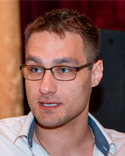 Ilya Donguzov, a VBLHEP senior engineer: “This is the third time that the conference in Alushta becomes a highlight of my summer. This is a rare combination of serious scientific work and live communication with colleagues, directorate, and participants in an informal setting. It is nice to see how regular attendees grow, and new interesting faces emerge. I am sure that such meetings contribute to the development of projects and partnerships”.
Ilya Donguzov, a VBLHEP senior engineer: “This is the third time that the conference in Alushta becomes a highlight of my summer. This is a rare combination of serious scientific work and live communication with colleagues, directorate, and participants in an informal setting. It is nice to see how regular attendees grow, and new interesting faces emerge. I am sure that such meetings contribute to the development of projects and partnerships”.
The annual conference in Alushta not only provides an opportunity to present research, but also creates a platform for open dialogue, exchange of ideas and joint initiatives of young scientists from different countries. The organizers are looking forward to the next year: new formats, ideas, and participants are ahead!
